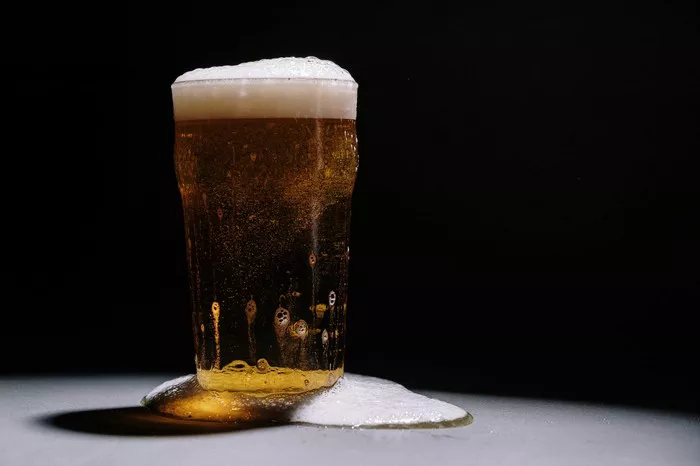Beer, a beloved beverage enjoyed by many, is often associated with a certain level of sweetness. However, for those who are watching their sugar intake or following a low-sugar lifestyle, finding beers that align with their dietary preferences can be a challenge. While most beers contain some amount of sugar, there are options available that have lower sugar content. In this article, we will explore the world of low-sugar beers, discussing their characteristics, production methods, and some notable examples that cater to those seeking a less sweet brew.
Understanding Sugar in Beer
Sugar plays an essential role in the brewing process, providing the necessary food for yeast to convert into alcohol through fermentation. During fermentation, yeast consumes the sugars present in the malted grains, such as barley, and produces alcohol and carbon dioxide. As a result, all beers will contain some residual sugar, even if the levels vary.
The Impact of Sugar on Beer Sweetness
The level of sweetness in beer can be influenced by various factors, including the amount and type of malt used, the fermentation process, and any additional ingredients added during brewing. Some beer styles, such as stouts or porters, may have a naturally sweeter taste due to the use of roasted malts, while others, like IPAs, tend to be more bitter with less perceived sweetness.
Low-Sugar Beers
While it is difficult to find beers that are completely devoid of sugar, there are options available that have lower sugar content compared to traditional beers. These low-sugar beers are designed to provide a more balanced flavor profile with reduced sweetness. Brewers achieve this through a combination of careful ingredient selection, fermentation techniques, and sometimes the addition of sugar substitutes. Let’s delve into some strategies used to create low-sugar beers:
1. Selecting Low-Sugar Ingredients
Brewers can choose malted grains that have lower sugar content, resulting in a beer with reduced sweetness. Additionally, they may incorporate alternative grains like rice or corn, which contain less sugar than barley.
2. Extending Fermentation
Extending the fermentation process allows the yeast to consume more of the available sugars, resulting in a beer with lower residual sweetness. This can be achieved by adjusting fermentation time, temperature, or yeast strains used.
3. Utilizing Sugar Substitutes
In some cases, brewers may use sugar substitutes to achieve a low-sugar profile. These substitutes, such as stevia, monk fruit extract, or artificial sweeteners, provide sweetness without adding significant calories or impacting blood sugar levels.
Notable Low-Sugar Beers
Several breweries have embraced the demand for low-sugar beers, offering options that cater to individuals seeking a more balanced brew. Here are a few notable examples:
1. Dogfish Head Slightly Mighty
Slightly Mighty is a low-calorie IPA crafted by Dogfish Head Brewery. It boasts a modest 95 calories and 3.6 grams of carbohydrates per 12-ounce serving. This beer utilizes monk fruit extract to provide a touch of sweetness while keeping the sugar content low.
2. Lagunitas DayTime
DayTime by Lagunitas Brewing Company is a flavorful and hoppy session IPA with a relatively low sugar content. It clocks in at 98 calories and 3 grams of carbohydrates per 12-ounce serving. It achieves its balanced flavor profile through careful ingredient selection and brewing techniques.
3. Guinness Draught
While Guinness Draught is often associated with its smooth and creamy texture, it is surprisingly low in sugar compared to many other beer styles. It contains around 10 grams of carbohydrates per 12-ounce serving, resulting in a moderately sweet profile for a beer of its richness.
4. Michelob Ultra
Michelob Ultra is a popular light lager that has gained popularity among health-conscious individuals. It contains just 2.6 grams of carbohydrates and 95 calories per 12-ounce serving, making it a low-sugar option for those seeking a light and refreshing beer.
Enjoying Low-Sugar Beers
When enjoying low-sugar beers, it’s important to approach them with an open mind and embrace the balance they offer. Here are a few tips for savoring the flavors of low-sugar brews:
Explore Different Styles: Low-sugar beers come in various styles, from light lagers to hoppy IPAs. Experiment with different styles to find ones that align with your flavor preferences while keeping the sugar content in check.
Pairing with Food: Low-sugar beers can be excellent companions for a wide range of foods. Their balanced profiles make them versatile when pairing with various dishes, from salads and seafood to grilled meats and cheeses.
Serve at the Right Temperature: Pay attention to the serving temperature of your low-sugar beer. Serving it too cold can mute the flavors, while serving it too warm may intensify the sweetness. Find the ideal temperature range that enhances the beer’s characteristics.
Seek Brewery Recommendations: Reach out to local breweries or taprooms that prioritize low-sugar or low-calorie beers. They may have additional recommendations or limited-release options that cater to individuals seeking a well-balanced brew.
Conclusion
While it is challenging to find beers completely devoid of sugar, low-sugar options exist for individuals seeking a more balanced drinking experience. By understanding the factors that contribute to sweetness in beer and exploring breweries that prioritize low-sugar profiles, you can find beers that align with your dietary preferences without compromising on flavor. So, raise a glass of low-sugar beer and savor the art of moderation while enjoying the diverse and delicious world of brewing. Cheers to balance and delicious brews!


